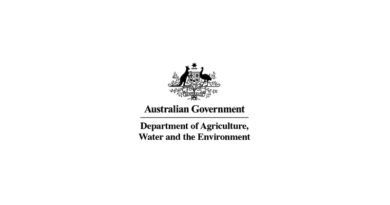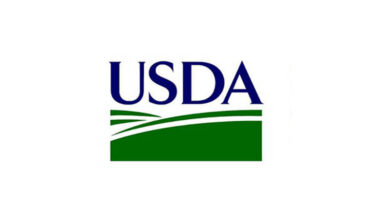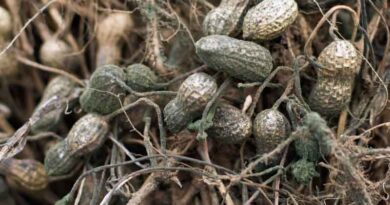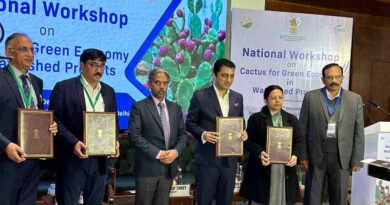Drought relief as Waimea dam releases water
11 April 2024, NZ: The Waimea Community Dam has been a quarter of a century in the making, but it is finally releasing water into the river to fill the aquifers and provide a reliable source of water for the next 100 years.
It ended up costing an estimated $198 million and was two years behind schedule, but for growers like Bruno Simpson at Waimea Nurseries, it is a huge relief to get to the finish line and he admits they got through the last two years ‘by the skin of our teeth’.
Behind the 53m high concrete face of the dam is the ability to hold 13 billion litres of water in its reservoir, Te Kurawai o Pūhanga, making it the largest public dam to be constructed in New Zealand since the Clyde Dam in the early 1990s.
It was back then, Bruno explains, that the idea of a dam was first mooted in Tasman as regular droughts took their toll on the productive Waimea Plains and urban communities. Then the 2001 drought hit – the Big Dry as it was named by NIWA (National Institute of Water & Atmospheric Research) – that was the worst regional drought on record and resulted in the Waimea River drying up in parts of the lower reaches, seawater incursions of some of the town water supply bores as well as irrigation bores and severe water restrictions. The region lost millions of dollars-worth of horticulture produce that year and it revealed an uncertain future for urban water supply as the population increased.
Climate volatility meant reliable water was no longer guaranteed and that brought together farmers, growers, iwi, Department of Conservation, Fish & Game NZ, the wider expanding community, commercial developers, the environmental sector and both local councils to collaborate on a dam project.
Eighteen potential sites were assessed for engineering, environmental and social factors before selecting the Lee Valley site for its ability to capture rain in its headwaters as well as the Lee River at its base feeding into the Waimea waterways and aquifers. To prove the point, in August 2022 a one-in-50-year storm event dropped 187mm of rain in the catchment that resulted in more than 30 million cubic metres of water flowing through the dam site. Enough to fill the reservoir two-and-a-half times in four days.
As dam plans were made, the costs continued to rise though, and ultimately the only way to get it over the line was through larger-scale irrigators digging deep into their pockets to buy surplus shares. Tasman District Council now owns 51 percent of the dam, paying for 21 percent of its urban share through water rates, charges and $5 million from neighbouring Nelson City Council. The other 30 percent of the council’s share is for environmental, economic and community benefits which is funded by targeted rates, Crown Irrigation Investments Limited (CIIL) loans and enterprise income.
Waimea Irrigators Ltd has funded the other 49 percent of the dam costs and it has done that by selling shares to irrigators and rural people, as well as securing loans from CIIL. Century Water is a company formed by a number of the larger irrigators who pulled together $11 million to purchase all the additional shares in the scheme above the 3,000 shares purchased by Waimea Irrigators.
When the project was first presented to the public in 2017, it had a price tag of $79.5 million and by its completion that had risen to $198 million. The biggest hurdle for the build and cause of increased costs was the discovery of highly fractured rock on the site, with multiple large shear zones (areas of ground rock and clay) bisecting the top of the spillway, plus weak rock under the plunge pool. Added to geology problems was the high inflation on the cost of materials and global supply chain disruptions, materials in short supply and the impact of Covid-19 on staff and productivity.
Bruno wears a lot of hats for the dam; as a grower and irrigator he is a Waimea Irrigators’ representative, plus he is deputy chairman of Waimea Water which is the company formed to build and operate the dam. He is also a director of Century Water that purchased the additional shares to reach the funding target.
He says that some of the challenges, such as unearthing geology problems, comes down to limited funds at the outset and it’s a problem for numerous projects.
“It’s a real challenge. These schemes are hard to get off the ground because people need to put money that they don’t really wish to lose, into feasibility and investigations. People are reluctant to do it because it’s so hard to get these projects over the line from a consent and cost point of view. If you’re fighting on limited funds that no-one wants to spend, you do just what you need to do to make the investigations relevant.”
The other challenge with the project was finding the expertise, he says.
“The expertise in large, vertical construction projects like this is generally lacking in New Zealand. It doesn’t mean that expertise isn’t able to be brought to the project from offshore, and the project benefited from some immensely experienced people in the design side of the project, and even on the board of the dam company was dam construction expertise. Some of it came later in the project though and that means the project might have been delivered differently and been able to be completed faster if that expertise had been available from the outset and throughout the project.”
For irrigators, he says it would have been considerably cheaper to build on-farm water storage, but firstly, that would have resulted in numerous ponds across the Waimea Plains and taken up a lot of productive land cumulatively in order to have the reliability to grow horticulture crops.
Secondly, it would not have solved the water security issue for the entire community into the future. Whereas the dam has already supported developments such as Richmond West which he says would not have been able to go ahead without a projected future water supply and provides water security for urban areas from Richmond to as far as Mapua. Just prior to the dam releasing water for the first time from the smaller of three permanent dispersing valves at the beginning of March, many of the urban communities including Richmond had reached Phase E water restrictions which meant households were not allowed to even water their vegetable garden from a hose. The council suggested they place a bucket in the shower to collect water.
When water was released from just one of the dam’s three valves at the beginning of March, those restrictions were instantly lifted in most areas and once again residents could water their gardens, wash their cars – and irrigate their crops and land to 100 percent of their consented maximum water take limit under pre-dam conditions.
A dam was undoubtedly the way to go, says Bruno, and though there have constantly been some grumblings from members of the community about the need for a dam and its costs, he thinks it is a vocal minority.
“The cost blowouts have not been ideal, but this scheme is still a reasonably viable one for the whole of the region.
“It wasn’t strictly about a return on investment because I can tell you that as an investment it stacks up very poorly. But it provides security to those existing growers, and I think for the future land users on the Waimea Plains it means that there will be potentially more demand for land here because the water reliability will be as good as anywhere else – or better than a number of places.”
At the beginning of the project, it was suggested the operating costs would be about $500 per hectare per year, but that has risen to about $1,050 plus GST per hectare this season.
Because it is expensive water, he says the operating costs per annum will likely drive some changes in land use toward more intensive horticulture crops. Only three dairy farms remain on the Waimea Plains and they have long accepted dairying does not have a long-term future there.
Now that the dam is flowing, Bruno says there is the potential to sell the surplus shares held by Century Water to irrigate a further 2,300ha and as more people join the scheme, the scheme gets cheaper.
The dam was built with the capacity to support about 5,000ha and Waimea Water says further uptake will be focussed on unaffiliated and partially affiliated area in the zone of effect, with some potential to draw water from the zone to areas on the fringe.
The Waimea Community Dam is not your typical dam that pipes water to where it is needed. There are no pipes leading from the dam. Instead, it releases water into the river and that will recharge the aquifers where bores take water.
Bruno acknowledges it will now be watched by other regions to see how it goes through severe droughts, and whether irrigators and urban supply do get the water they need.
First published in the April issue of The Orchardist.
Also Read: ADAMA Launches New Multi-Crop, Broad Spectrum Fungicide Maxentis®
(For Latest Agriculture News & Updates, follow Krishak Jagat on Google News)















